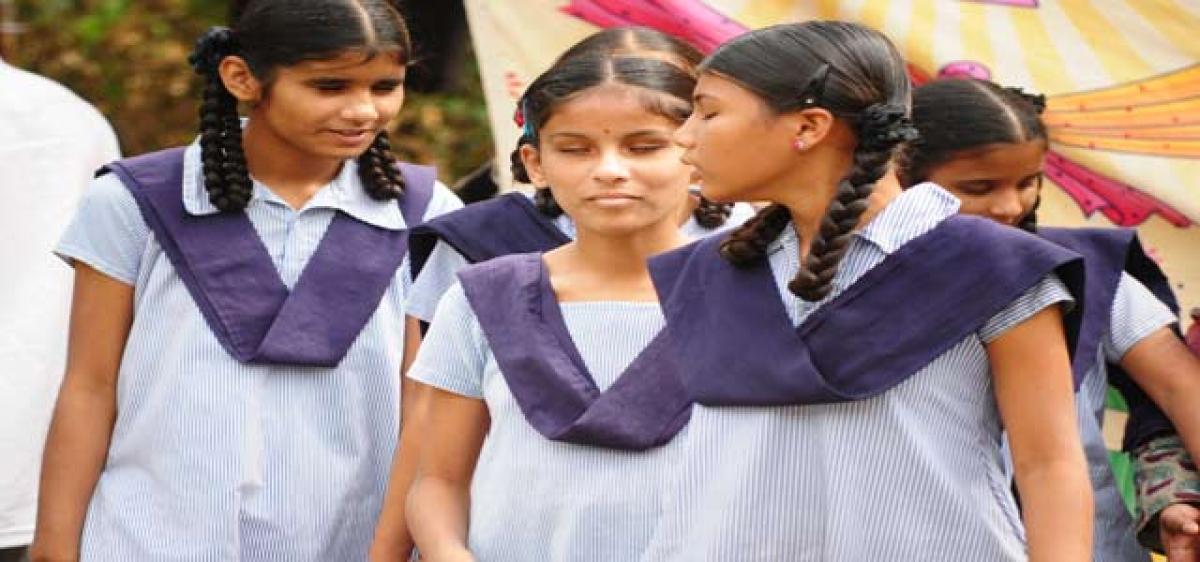Live
- Revanth assures Kurma community of its due
- 204 cadets pass out of AFA
- Youngest chess king wins laurels for India
- FairPoint: Rahul’s rhetoric falls flat as PM Modi steals spotlight
- Notice issued to SGPC chief Dhami
- PM Surya Ghar scheme set to surpass a decade’s installation growth in a year
- Centre should probe Soros-Gandhis nexus
- Student held, released after counselling
- Thousands witness Sagara Harathi
- Devotees participate in Kalasa Jyothi procession
Just In

Of the 37 million blind in the world, 15 million are in India. One among the three blind persons in the world lives in India, according to the World Health Organisation (WHO) statistics.
Hyderabad: Of the 37 million blind in the world, 15 million are in India. One among the three blind persons in the world lives in India, according to the World Health Organisation (WHO) statistics.
In Telangana, there is an estimated 5 lakh populace is blind that means about 1.8 per cent of 3.5 crore population is visually-challenged. What is alarming is the fact that 75 per cent of this is avoidable.
Out of every 100 cases, nearly 80 are cases of avoidable blindness. Shortage of trained medical personnel and inequitable concentration of medical facilities is a major cause for worry.
Every year, about 100 ophthalmologists graduate from the state but their services are not utilised uniformly across the districts.
While 70 per cent of the patients live in the hinterland, 80 per cent of medical specialists are based in urban areas.
Dr Manoj Chandra Mathur, president, Telangana Ophthalmological Society and a senior consultant (Glaucoma), Swarup Eye Centre & Medivision said: “Cataracts can be easily managed in towns.
There is adequate number of trained surgeons to take care of cataracts. The issue is stringent guidelines for grant of recognition for Aarogyasri, Employee Health Scheme by the government that is leading to inequitable distribution of care and cramming of patients in a few centres.”
There is just one tertiary care centre in Hyderabad, Sarojini Devi Eye Hospital, and one Regional Eye Institute at Warangal.
While cataract operations are done in rural areas acute problems are referred to Hyderabad.
Establishment of a tertiary-level care involves huge cost and as a result, people living in rural areas are at a disadvantage. The major causes of blindness are cataracts, glaucoma and corneal blindness.
Glaucoma is the second leading cause of irreversible blindness and the patient is unaware till 40 per cent damage is done.
Dr A Saibaba Goud, chairman, Devnar Foundation, said: “Early detection is the need of the hour as several thousands of people could be saved from complete blindness.”
Diabetic retinopathy, which was not so common, is today a major problem. Dr Saibaba said that on an average he gets 7 to 8 patients every day with diabetic retinopathy.
In Telangana, there are just seven blind schools, four run by the government, two in Hyderabad and two more in Karimnagar and Mahbubnagar, the remaining two blind schools are run by NGOs in Hyderabad, Gadwal and Nalgonda.
Diagnosis is a key in treating blindness but equipment such as field analysers, OCT scan, Yag Laser machine to effectively tackle this issue is not available in district hospitals.
As far as corneal blindness is concerned, another cause which can be effectively tackled by propagating eye donation is not happening to the desired level. This is at present catering to only 10 per cent of its requirement.
For glaucoma and cornea blindness, tertiary care is advised. Glaucoma can be treated and blindness avoided but district hospitals do not have the equipment to treat patients and refer them to Hyderabad. Dr Rajender Gupta, Superintendent, Sarojini Devi Eye Hospital, said:
“Due to the lack of equipment in district hospitals, laser equipment and mapping has to be done at Sarojini Eye Hospital.”

© 2024 Hyderabad Media House Limited/The Hans India. All rights reserved. Powered by hocalwire.com







